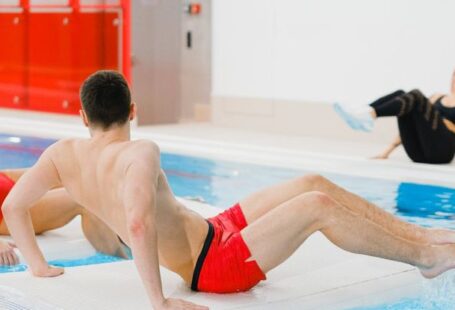Triathlons are grueling tests of endurance, requiring athletes to swim, bike, and run long distances consecutively. The weeks leading up to a race are crucial for triathletes to prepare their bodies for optimal performance. One key aspect of race preparation is the tapering phase, a period of reduced training intensity and volume aimed at allowing the body to recover and peak on race day. Tapering is a delicate balance between maintaining fitness and avoiding fatigue, and understanding how to taper effectively can make a significant difference in race-day performance.
**The Science Behind Tapering**
Tapering is based on the principle of supercompensation, where the body responds to a period of intense training by rebuilding and strengthening muscles during rest. By reducing training load in the days leading up to a race, triathletes give their bodies the opportunity to repair and adapt, leading to improved performance. Research has shown that tapering can result in significant performance gains, with studies indicating improvements in endurance, power output, and overall race times following a well-executed tapering period.
**Duration of the Taper**
The duration of the tapering phase can vary depending on the individual athlete and the length of the race. Generally, tapering periods range from one to three weeks, with shorter tapers more common for sprint or Olympic-distance triathlons and longer tapers for Ironman events. It is essential for athletes to experiment with different taper lengths during their training to determine what works best for their bodies and race goals.
**Maintaining Intensity**
During the tapering phase, it is crucial for triathletes to maintain some level of intensity in their workouts to prevent detraining and muscle deconditioning. While overall training volume is reduced, incorporating short, high-intensity efforts in each discipline can help athletes retain their fitness levels and keep their bodies sharp for race day. Interval workouts, hill repeats, and race-pace efforts are effective ways to maintain intensity without overexerting the body during the taper.
**Nutrition and Hydration**
Proper nutrition and hydration are essential components of an effective tapering strategy. As training volume decreases, triathletes should adjust their caloric intake to match their reduced energy expenditure. Focus on consuming nutrient-dense foods to support muscle recovery and repair during the taper. Additionally, staying hydrated is crucial for maintaining performance and preventing fatigue. Adequate hydration supports muscle function and helps regulate body temperature, both of which are critical during a race.
**Mental Preparation**
Tapering is not just about physical recovery; it also provides an opportunity for mental preparation and visualization. Triathletes can use the tapering period to review their race strategy, visualize the course, and mentally rehearse transitions and race scenarios. Developing a pre-race routine and mindset can help athletes stay focused and confident on race day, enhancing their overall performance.
**Race-Day Readiness**
As race day approaches, triathletes should focus on ensuring they are physically and mentally prepared for the event. This includes organizing race gear, checking equipment, and familiarizing themselves with the race venue and course layout. Adequate rest and sleep in the days leading up to the race are also essential for optimal performance. Triathletes should aim to arrive at the race well-rested, fueled, and mentally ready to tackle the challenge ahead.
**In Summary**
Tapering is a critical component of a triathlete’s race preparation, allowing the body to recover and peak at the right time. Understanding the science behind tapering, the duration of the taper, maintaining intensity, proper nutrition and hydration, mental preparation, and race-day readiness are key factors in executing an effective tapering strategy. By incorporating these elements into their training plan, triathletes can optimize their performance on race day and achieve their full potential in competition.





